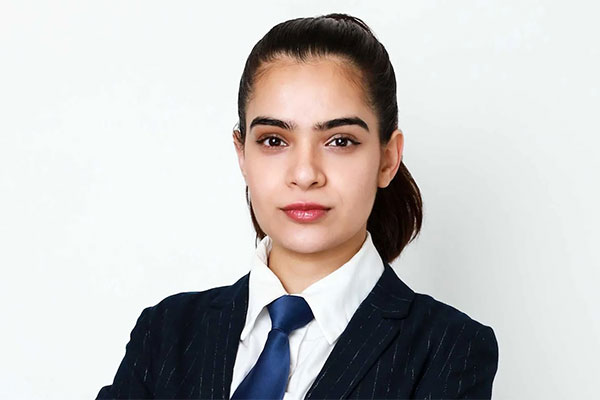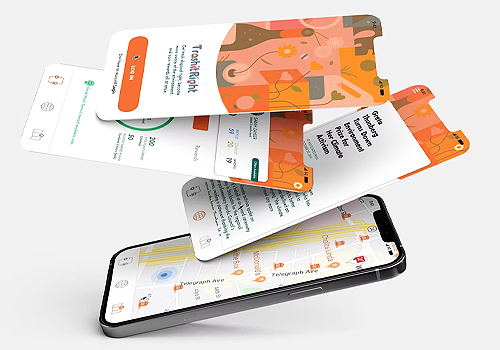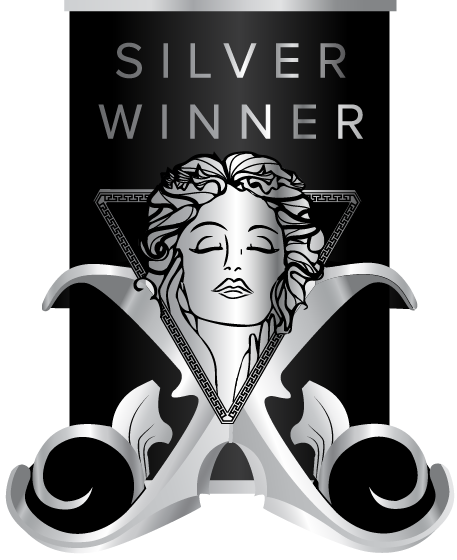
Interview
Sarah Zaheer
1 Congratulations on winning the MUSE Design Awards! Can you introduce yourself and share about what inspired you to pursue design as a career?
Thank you! I’m Sarah Zaheer—I'm a designer and researcher with a deep love for solving meaningful problems that sit at the crossroads of people and technology. What pulled me into design was this ongoing curiosity about why people do what they do. That led me to Behavioral Design, where I realized how powerful design can be in shaping everyday actions for the better. For me, it’s not just about building beautiful interfaces—it’s about creating experiences that empower people and leave a lasting impact.
2 What does being recognized in the MUSE Design Awards mean to you?
Honestly, it means the world! It’s not just a recognition of the work—it’s a recognition of the why behind it. TrashitRight was all about making sustainability more approachable, more actionable. So to have a global platform say, “This matters”—it’s incredibly validating. It encourages me to keep pushing for socially conscious design and reminds me that even small behavior shifts, if designed well, can ripple out into real change.
3 How has this achievement impacted your career, team, or agency, and what opportunities has it brought so far?
Winning the MUSE Design Awards has been a major moment of validation—not just for me, but for the potential of TrashitRight as a real-world solution. It’s helped me build credibility when reaching out to potential collaborators and funders, because the award shows there’s already strong interest and belief in the idea. I’ve had conversations around taking this beyond a prototype—exploring grants, partnerships, and seed funding to help develop a pilot in schools or community centers. More than that, it’s sparked deeper thinking around how this project could evolve into a larger behavioral design initiative. At its core, TrashitRight isn’t just about trash—it’s about changing habits. And that opens up so many opportunities to apply these same principles to other behavior-driven challenges, whether in sustainability, health, or education. This recognition gave the project visibility—but also momentum to take it further.
4 What role does experimentation play in your creative process? Can you share an example?
Experimentation is at the heart of how I design—it keeps things fresh, human, and grounded in reality. With TrashitRight, we explored everything from camera recognition tech to different projection formats. At one point, we tested sound-based feedback, but it didn’t feel quite right. Eventually, we landed on visual projection because it was intuitive and inclusive. As someone who works in Human-Computer Interaction, I really value that back-and-forth between what we think will work and what actually works for people in context.
5 What's the most unusual source of inspiration you've ever drawn from for a project?
Once, I was watching someone toss a coffee cup into a trash bin—and then hesitate, pull it back, and look around, confused. That brief moment of indecision really stuck with me. It wasn’t a dramatic scene, but it said so much about the everyday friction people feel around waste disposal. That small, awkward pause inspired TrashitRight—because I realized design could step in right at that moment to guide, support, and even reward the right decision. Sometimes inspiration isn’t loud—it’s a quiet, overlooked moment that reveals a much bigger opportunity.
6 What’s one thing you wish more people understood about the design process?
Design isn’t a straight line! It’s messy, emotional, and full of detours—and that’s actually a good thing. The best solutions are usually hiding behind the third or fourth (or tenth) iteration. I wish more people saw that uncertainty as part of the magic. It’s where listening, learning, and evolving happen. Especially when you’re working on social impact projects, you have to stay flexible and keep coming back to the real needs of the people you’re designing for.
7 How do you navigate the balance between meeting client expectations and staying true to your ideas?
I see it as a partnership, not a tug-of-war. The goal is to help clients understand not just what we're designing, but why it matters. I love using data visualization to tell that story—whether it’s insights from user research or metrics showing how behavior is shifting. When clients can see the value through clean, compelling visuals, they’re more open to bold ideas. It’s not about persuading with opinions—it’s about showing impact in a way that’s impossible to ignore.
8 What were the challenges you faced while working on your award-winning design, and how did you overcome them?
One big challenge was building a system that could recognize and respond to different types of waste in real-time, all while being user-friendly. We had to balance technical accuracy with clear communication. My background in Behavioral Design helped a lot here—we tested different kinds of feedback and ultimately chose projection because it guided users without overwhelming them. The goal was always to educate without judgment, and that shaped every decision we made.
9 How do you recharge your creativity when you hit a creative block?
I unplug and get tactile. Sketching, organizing, even just going for a walk—anything that gets me out of a screen-based loop. Nature helps, too—it brings me back to simplicity and scale. I also love diving into psychology or behavior science books. Understanding how people think and act is endlessly inspiring—and often gives me the spark I need to get back into flow.
10 What personal values or experiences do you infuse into your designs?
Empathy, sustainability, and inclusion are my anchors. Having lived in multiple cities and worked with people from so many different backgrounds, I’ve learned how important it is to design for equity—not just convenience. With every project, I ask: Who might this leave out? or How can this experience be more empowering? With TrashitRight, that meant designing for first-time recyclers, kids, even non-native speakers. Good design is about meeting people where they are—and inviting them in.
11 What is an advice that you would you give to aspiring designers aiming for success?
Stay curious, and stay intentional. Don’t chase trends—chase impact. Get really good at listening, and treat feedback like gold. And remember, your work doesn’t need to be loud to be meaningful. Often, the most powerful designs are the quiet ones that change someone’s behavior or perspective without them even realizing it. If your work makes someone’s day a little better—or the planet a little healthier—you’re doing it right.
12 If you could collaborate with any designer, past or present, who would it be and why?
I’d love to collaborate with Julie Zhuo. As a woman of color and an immigrant, I deeply admire how Julie has broken barriers through her work as a product designer and leader—particularly in creating human-centered systems within large organizations. Her approach to design—blending empathy, user research, and systems thinking—really resonates with my own philosophy. She’s done an incredible job scaling human-centered design practices, and I believe there’s so much I could learn from her, especially about leading impactful teams and navigating the complexities of designing at scale. I also admire her ability to clearly articulate complex design ideas—something I continue to strive for in my own work.
13 What's one question you wish people would ask you about your work, and what's your answer?
I wish more people asked: How do you know your design is making a difference? Because for me, impact is everything. I look at behavior change—are people doing things differently because of what we created? Are they learning, engaging, growing? In TrashitRight, success wasn’t clicks or downloads—it was seeing someone pause, think, and sort their waste correctly for the first time. That’s the kind of design that sticks. And that’s what I’ll always strive for.

